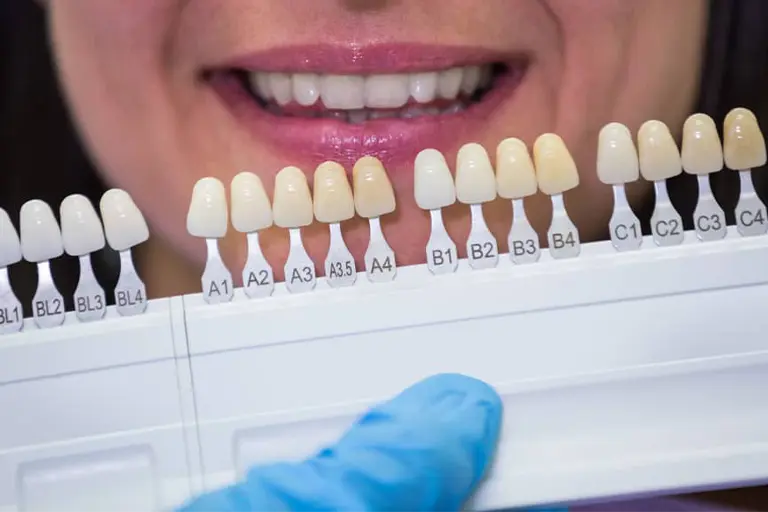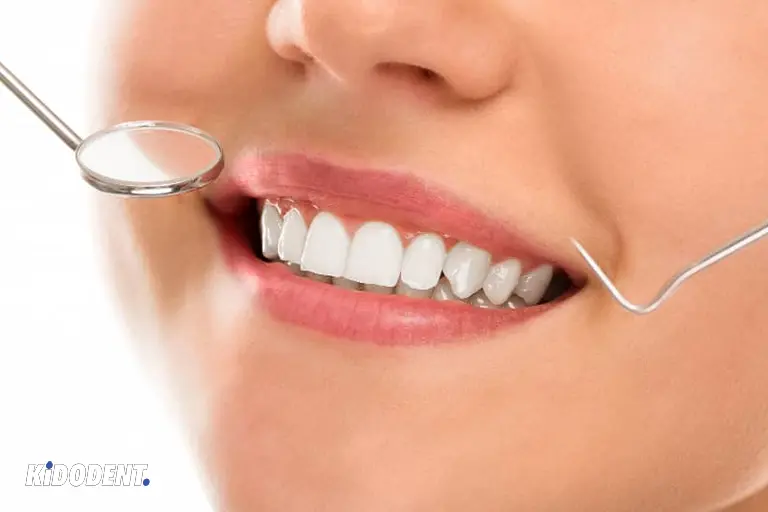Do you have a chipped, cracked, decayed, or discolored tooth? And you probably looking for the least invasive and cost-effective solution, then composite bonding can be a good option for you. Composite bonding or dental bonding improves the appearance of your smile, giving you the confidence to shine your pearly whites. It is less expensive than other cosmetic dental procedures like crowns and veneers. The article will explain composite bonding, including the problems it can fix, the pros and cons, the procedure, and the costs.
What is composite bonding?
Composite bonding, also called dental bonding or teeth bonding, is a cosmetic procedure where your dentist applies a tooth-colored composite resin material to your existing teeth in order to repair, reshape, or improve their appearance. It is used to treat various teeth imperfections ranging from restoring your chipped or fractured teeth to fixing discolored or gapped teeth.
Composite resin is also a restorative filling material—composite filling— which dentists use widely to restore cavities and tooth decay. It brings a natural look to your teeth and is an alternative to the less esthetic silver amalgam filling.
Why is composite bonding done?
There are various dental problems that composite bonding can fix. It can be considered:
- To repair chipped or cracked teeth
- To mask discoloration and staining that does not respond to teeth whitening
- To shape up or lengthen the small or short teeth to a regular more harmonious look
- As dental filling, to fill cavities and repair decayed or broken-down teeth
- To close small gaps between the front teeth (e.g., mild cases of diastema)
- As a protective way to cover up exposed tooth root which occurs when gums recede. The bonding prevents roots from being susceptible to decay and harmful bacteria.
Pros and cons
You should weigh both benefits and possible drawbacks before you have dental bonding:
Pros:
- Most affordable cosmetic dental repair procedure
- An esthetic natural look for your smile
- Less invasive in which no removal of tooth structure is required unlike porcelain veneers or crowns
- No lab costs and a quick procedure, as the composite is directly applied and shaped on the tooth enamel
- No need for anesthesia
Cons:
- Can chip or crack
- Not as stain-resistant as porcelain veneers or crowns
- Does not last as long as porcelain veneers or crowns which are made of ceramic—a much stronger material
- More touch-up treatments may be needed

How much does composite bonding cost?
Generally, the cost of composite bonding can range from $200 to $600 per tooth. The cost, but, may vary depending on the scale of the process, location, the dentist’s expertise, and insurance coverage.
Your dentist can determine the cost after examinations and discuss the desired results you want. To decrease the price, talk to your dentist if your dental insurance covers bonding or not. Since it is mostly considered a cosmetic treatment, you might want to be informed before you have your procedure done.
How long does composite bonding last?
On average, composite bonding lasts from 3 to 10 years. Of course, good long-term care and maintenance will increase the lifespan of bonding.
You will likely need replacement or touch-ups when you bite into hard foods or do oral habits like teeth grinding or nail biting. These will break the composite bonding off and tend to wear it away sooner than you expected. Also, bonding can stain with high consumption of dark-colored drinks like coffee which will demand replacement earlier.
What happens during composite bonding procedure?
The dental bonding procedure is relatively quick and usually done in one appointment without multiple dental visits.
Your dentist will start by choosing the composite resin color that closely matches the natural color of your teeth. Then your dentist roughens the tooth surface very slightly and applies a liquid that helps the dental bonding material to adhere to the tooth structure.
Your dentist then applies the composite resin material which is molded to the desired shape and hardened—light cured—with a UV light. There can be additional process for shaping which is followed by polishing. This smoothens out any excess and rough edges and gives a glossy, shiny look to the tooth.
Teeth bonding procedure does not typically require the dentist to remove any portion of the tooth. It is a simple treatment and completely relies on the dentist’s skills during the procedure to build up a new beautiful smile. So, you might want to choose a highly skilled cosmetic dentist to get the preferred and best results.
Watch the short video below by ADA to see how the composite bonding procedure is done:
What is the difference between bonding and porcelain veneers?
Porcelain veneers are custom-made shells that are attached to the front surface of your teeth. These tooth-like shells are made of porcelain (ceramic), which are more durable and resist stains very well.
Composite bonding is reversible because there is little or no tooth enamel involved. Also, your dentist applies and shapes the material directly on your teeth. On the other hand, your dentist needs to remove some enamel to place porcelain veneers. They are first prepared in the lab and made according to the impression which is taken from your teeth.
What is the difference between composite bonding and composite veneers?
When bonding is supposed to cover the entire front surface of your tooth, it is called composite veneers. This is a more suitable form of procedure to hide imperfections or discolorations that are affecting the front surface of teeth. Composite bonding mainly refers to some small changes to the shape, length, or partial alterations to the existing tooth. There are no more differences.

Can I whiten composite bonding?
The answer is no you can’t whiten bonding material. Unlike our natural teeth which have a porous structure allowing whitening agents to penetrate into the teeth and whiten them, composite bonding is nonporous. It means whitening does not work on it.
Composite bonding is made from resin plastic matrix (reinforced polymer), inorganic fillers such as quartz, and silane. These materials can pick up stains over time and change color which will require polishing by your dentist to rebuild the whiter appearance.
It is recommended to bleach or whiten your teeth before you have teeth bonding.
How to care for my bonded teeth?
Your bonded tooth or teeth require the same care and attention just as your natural teeth. But as dental bonding is more prone to chipping and staining compared to other cosmetic treatments like porcelain veneers and crowns, you need to keep some caring tips in mind.
To ensure your composite bonding lasts longer and maintain good oral health, you should:
- Brush your teeth at least twice a day.
- Floss daily and properly.
- Avoid biting nails or chewing on pen, ice, or other hard foods or objects since these can chip and wear down the composite.
- Don’t try to use bonded teeth to tear things.
- Watch out for staining. Composite will stain if you drink a lot of high-pigmented beverages like coffee or red wine, or if you are a heavy smoker.
- Rinse your mouth with water after every meal or when consuming acidic beverages.
- Wear a mouthguard when doing sports activities.
- Purchase a nightguard to prevent grinding teeth damage.
- Have regular cleaning and dental checkups preferably every six months. Additionally, schedule a visit with your dentist right away if the dental bonding breaks off or chips or if you feel and notice sharp or rough edges after your procedure.
Conclusion
Composite bonding is a simple and effective treatment as long as you are the right candidate. It works great to replace the part of your teeth that has been damaged or chipped off slightly. If you want to make minor changes to the shape of your teeth, composite can do that for you. Whether to close a slight gap, cover up severely discolored teeth, or lengthen or level out the shorter teeth, bonding gives you a uniform attractive smile.
